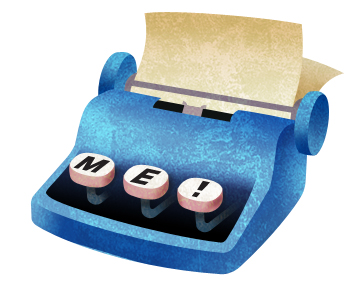Journalist 3.0
22 May 2014 | Non-fiction, Tales of a journalist

Illustration: Joonas Väänänen
As the world becomes more and more difficult to understand, the media, strapped for cash and forced for reduce expenses, sack their expert writers. Jyrki Lehtola assesses the new breed of cut-price journalists
Some time in the distant past it was possible for a reader to reflect that here was an educated journalist writing pithily. It would be nice to know more of his or her thoughts.
There used to be talk of such concepts as the ‘objective truth’, and editors shunned talking about themselves, or even speaking or writing in the first person. There was just the world, which the journalist, the conduit of truth, conveyed to the public.
Now, although most of us would prefer to know nothing about journalists and their private lives, journalists have brought their lives strongly into the public arena. Objectivity is dead; there are merely millions of subjects who perhaps share the same experiences, perhaps not, and, misled by some idealised concept of community, we are the beneficiaries of journalists writing about what it’s like to be a mum, how challenging life as a mother and journalist can be.
One thing hasn’t changed, and that is arrogance. Once journalists believed that they were in touch with objective reality. Now they believe that their personal experiences are of general importance.
When the media run out of money, when they can’t find their way out of a dead end, they make savings. One object of financial cuts has been expert contributions and columns. Here, experts in their fields wrote about the state of society or its various challenges. They knew what they were talking about. They had read books and memos, attended conferences and knew the people behind the decisions.
Nowadays there is no room for such writing, because there is no money, because there is no interest. Therefore column inches have been given to journalists who can tell nice stories about their own lives.
And thus was born Journalist 3.0.
There she stands, in a supermarket aisle, stalking the other shoppers. She spots a mother giving in to her child’s desire for sweets, and Journalist 3.0 writes a disapproving column about this mother. The column’s lesson: you should not give in to a child’s every whim. Journalist 3.0 does not; she knows how to write, raise her kids and write about raising her kids.
Journalist 3.0 writes long dramas about her everyday life: nappies, supermarket bags, rush-hour buses, rushing, rushing, rushing. For Journalist 3.0 wants to tell her readers something about the rush she’s in.
Journalist 3.0 has received negative feedback about her writing on the internet. She’s in pieces about it, and now she writes a column about her feelings, arguing that it’s time something was done about the anonymity of the internet – in real journalism I write under my own byline and you thank me under yours.
The journalist became the star of her life and yours, because there is no longer any money for anything else. At its worst, reading the morning paper is like watching Big Brother, except that nothing happens except for stalking and moralising.
Journalist 3.0 is a worldwide phenomenon which would merely be something of slightly depressing entertainment value – except that in Finland it also has social consequences.
At the same time as journalists have become stars, they have lost their sense of proportion. When a social agent fails to speak the truth in an interview, he does not lie to all of us; he lies to the journalist. When the agent is not directly accessible to the journalist, the journalist brings this inaccessibility to the attention of his readers as if it were a crime: if someone does not wish to speak to Journalist 3.0, he must have a lot to hide.
Which matters have received the most attention in the Finnish media? The confusing situation in Ukraine? Finland’s stumbling economy? No, articles about other journalists.
A certain journalist’s TV talk show was axed halfway through its run because it did not attract enough viewers. The journalist was understandably embittered by his experience and fell silent; because he did not say anything, the newspapers were full of pieces about how the presenter was silent. Journalists were assigned to the story with the task of monitoring the talk-show host’s Twitter feed. It was silent.
And when, after a week of silence, the talk-show host finally tweeted 140 characters’-worth of his feelings, the media net editions were immediately full of thousands of characters of pieces about that tweet.
The world has disappeared. Journalist 3.0 has taken its place.
Translated by Hildi Hawkins
Tags: journalism, media
No comments for this entry yet
